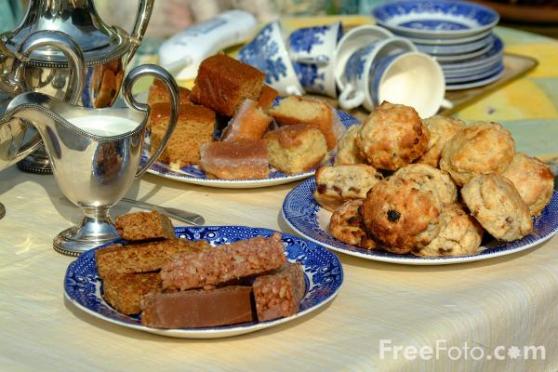Any place worth it’s name can off an afternoon tea. But to get it right, well, that takes some skill. And if it’s not something you’re used to, how do you know if it’s being done right? Well, this handy little guide should help.
Firstly, afternoon tea, what’s that about then? Well, it’s about taking some time, mid-afternoon to enjoy some refreshment with a little bit of sustenance. It’s an earlier, more refined version of an afternoon snack.

Afternoon tea with snacks is a big part of British culture
Where does it come from?
Afternoon tea originated in the UK around the 1800s. Middle-class society would not eat their evening meal until late, around 9pm. It was rumoured that the Duchess of Bedford would request tea and something simple like bread and jam, maybe some cake too, in her room during the afternoon to see her through until dinner time. This soon caught on, though, and before long afternoon team became a mainstay in Britain. These days, every major hotel in Britain or Australia offers an afternoon tea, like the Windsor’s afternoon tea here.
Tea today
It’s not common for the average British person to have afternoon tea on a daily basis, most people have simplified this with a cup of tea and maybe a biscuit either in work or just as they arrive home. The tradition is alive and well though, with most hotels
offering a range of afternoon tea options. Plus, independent tea rooms are sprouting up throughout the country, offering a slice of Victorian life.
Cream tea: The facts
Don’t be fooled by the name, this isn’t strictly an afternoon tea at all. Tea or coffee will be served alongside a scone (or two) complete with butter, cream and jam. There have been many debates on how you should assemble this (do I use all three options? Do I put jam then cream?).
Cream tea is said to originate in Devon and Cornwall and they have their own set of rules. In Devon it’s all about a mountain of cream topped with jam, whereas in Cornwall, jam is slathered on first. So really, it’s all a matter of personal preference.
Afternoon tea
Also sometimes called a ‘low tea’ due to its informal roots. Afternoon tea would be served around 4pm and would feature small sandwiches—cucumber, egg and cress usually – in addition to cake and often scones. Traditional black tea would be drunk, with either milk or a slice of lemon and sugar as needed. More floral teas such as Earl Grey or Darjeeling were also common.
Oh, but however you take your tea, remember the rules of stirring: imagine your cup as a clock face. The teaspoon starts at the 6pm position and is stirred clockwise. Don’t clink your spoon on the side of the cup and never leave your spoon inside it. Some places in the UK will refer to an afternoon tea as ‘high tea’. This is mainly to cater for the American audience who commonly call it high tea.
Here is a video showing you what it’s all about:
Afternoon v High
If you’re venturing out for tea, check the menus and you should be able to determine whether you’re getting an afternoon or high tea. High tea is traditionally more substantial and was usually served a little later, at around 6pm. The idea was that this
would combine both the afternoon snack and a light dinner. A kind of opposite brunch, if you will. High tea was popular with farm workers and rural communities. Tea was still a central part to the meal, something many of us now might find strange—drinking tea with a meal that isn’t breakfast. In addition to the staples of an afternoon tea, high tea would feature cold meats plus maybe eggs or fish.
Bubbles
It’s not very common to see the term Royal tea, this simply means that a glass of champagne or prosecco is served with your tea.


